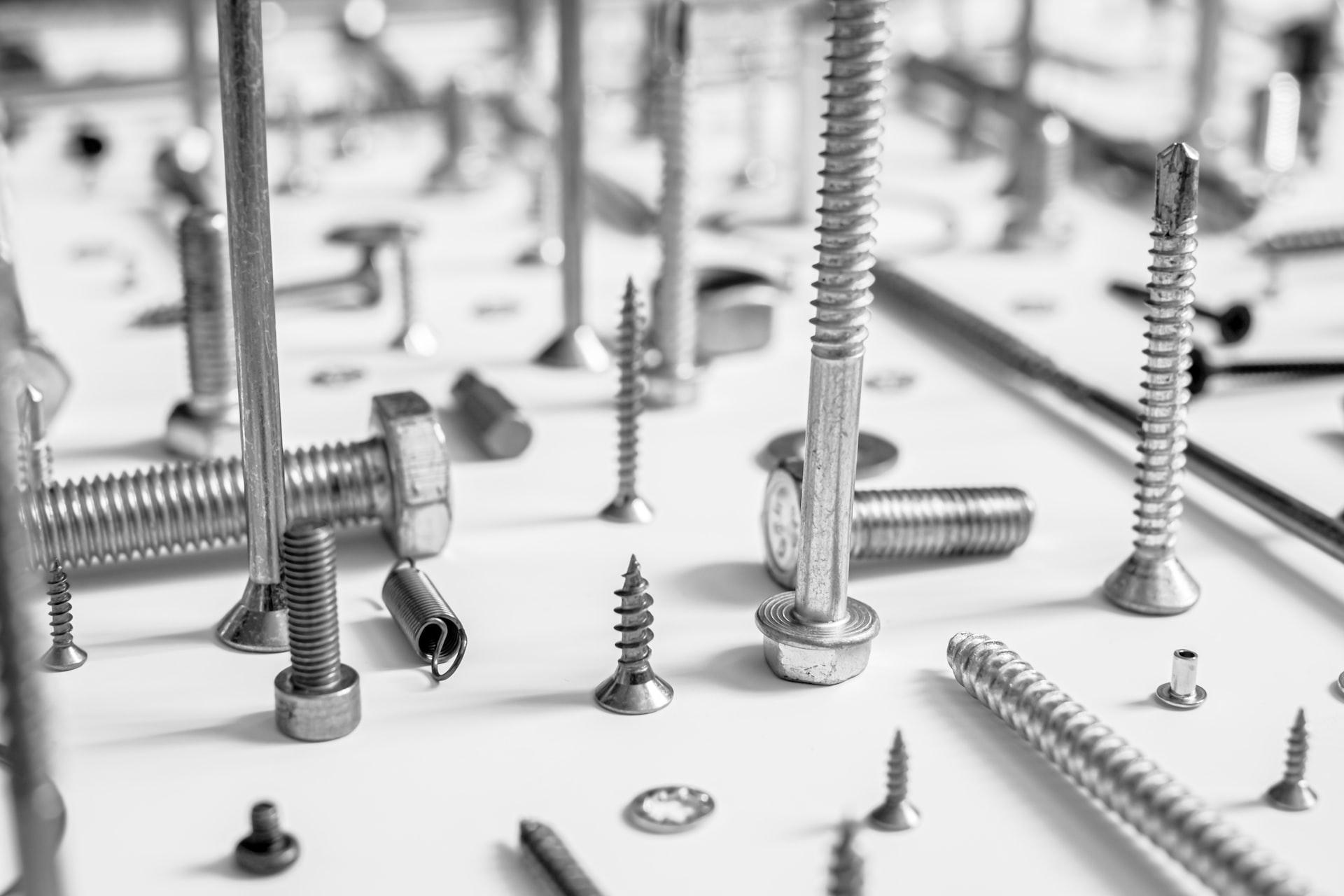Table of Contents
Bolts vs screws is a question many DIY-er faces when fastening materials together. Understanding how these fasteners work and their various applications and uses could mean the difference between success and failure for your DIY project.
DIY jobs are one of the most effective ways to save hundreds of dollars without the extra costs of hiring a professional to do the job for you. Understandably, the beginning of your DIY journey is a daunting and humbling experience as you learn to navigate the dos and don’ts of home improvement on your own.
Even some of the simplest tasks can be a challenge to the untrained eye, so it’s crucial to know the difference between the tools you use and when you should (or shouldn’t) be using them. One of the most imperative skills is understanding the difference between bolts and screws, the foundation that pins together all manner of construction projects, including DIY jobs.
Although both screws and bolts fasten materials together, bolts provide superior holding strength and durability, compared to screws.
Bolts vs Screws: What are they?
Before we teach you how and when to use bolts and screws, you need to know what they are.
What are bolts?
A bolt is a mechanical or industrial fastener with a threaded shaft that provides the strongest holding power for all your heavy-duty DIY projects. Bolts provide superior holding strength and durability, offering an unmatched level of gripping force due to their threads.
Whether using a bolt, screw, or another sort of fastener and forgings, it’s important to choose the right fastener for the task while working on DIY projects. Bolts also employ a nut and washer for an even more secure installation. Over 90% of all bolts are made of steel, making them one of the most effective tools for combining two pieces of material.
Types of bolts
There are dozens of types of bolts, all varying in their purposes.
- Steel Connector Bolts: combining two parts to deliver a finished appearance, these are the most common bolts you will encounter with your DIY projects, depending on what you’re building.
- Carriage Bolts: Carriage bolts are one of the most versatile bolts used in DIY projects, commonly used to join metal and wooden pieces together. Similar to steel connector bolts, they are also used in furniture, as well as in decking, patios and framing.
- Anchor Bolts: These bolts are commonly used in construction as they are incredibly strong, long-lasting, and suitable for concrete structures; therefore, they are unnecessary for most DIY projects.
- Machine Bolts: Machine bolts typically feature a hex head that is perfect for tightening a wrench or socket. They are ideal for joining metal-to-metal pieces together and joining metal to wood.
- Stove Bolts: These bolts are designed with threads lining down the shaft, allowing them to be used for most general-purpose projects. They’re typically used to join wood and plastic together.
What are screws?
Screws are versatile fasteners suitable for many DIY applications, offering a firm grip thanks to their threads. They are available in various shapes and sizes for concrete, metal, drywall, and wood. However, to properly use screws, we first need to discuss the difference between grip and shear strength.
Grip Strength: a fasteners ability to draw to pieces of material together.
Shear Strength: a fasteners ability to withstand side forces.
Compared to bolts and even nails, screws are brittle, and can easily snap in half if exposed to shear strength. In saying this, they provide grip and tensile strength for many fittings and won’t break from downward vertical force.
Types of screws
- Wooden Screws: As the name suggests, these screws are ideal for basic woodwork projects and are only suitable for attaching wooden pieces. They have a round or flat head and are available in multiple finishes.
- Deck Screws: Similar to wooden screws, these screws are designed mainly for a decking application and are therefore corrosion-resistant, more durable, and exclusively for exterior use.
- Drywall Screws: These screws are the standard fastener for drywall applications and were specifically designed for them, countersinking into the drywall without damaging it.
- Masonry Screws: These heavy-duty fasteners are perfect for use in concrete and masonry applications, requiring a predrilled hole before installation.
- Sheet Metal Screws: The primary function of these versatile screws is to secure metal sheets, though you can use them with other materials such as wood or plastic. Made from metal, they are sharp, durable, and one of the most reliable screws.
- Lag Screws: Often referred to as lag bolts, these screws are the strongest screws available as they are much larger in diameter than other screws and can deeply penetrate all materials. They are resistant to corrosion and commonly found in decking, walls, and most other outdoor structures.
So what’s the difference in use?
The main differences between bolts and screws are their application and inherent designs. Although industrial fasteners include various devices and tools to connect materials, bolts provide superior holding strength and durability.
If you’re completing a more advanced DIY project that requires heavy-duty holding power or industrial fasteners, such as concreting or beams, then you’re best to go with bolts. Bolts are typically fastened with a spanner, ensuring the project is tightly sealed.
Screws are suitable for most of your average DIY projects at home due to their easy application and middle-ground holding power. They are typically installed through a tapped hole, a pre-drilled hole that is ready for screw insertion, unless you are using a self-tapping screw, of course.
When to use Bolts vs Screws
Whether you’re looking to put together some furniture or are building your dream home, with our guide, you’ll have no trouble deciding whether to use a bolt or a screw for your next DIY project.




